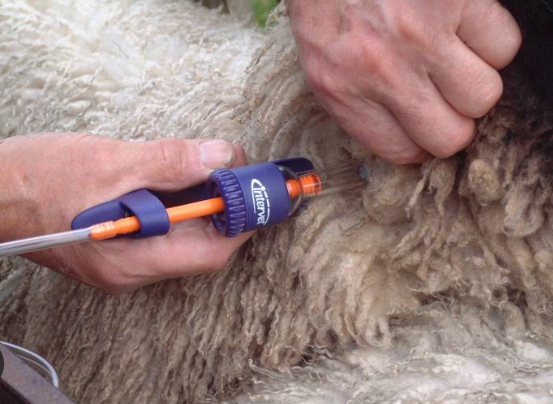Tips For Injecting Cattle And Sheep
22 July 2019

Bruising, abscesses and trauma are the three main reasons for beef and sheep carcases to be rejected at slaughter. A common cause of abscesses (a collections of pus in confined tissue spaces) is bacterial infection resulting from poor needle practice, particularly in the use of dirty needles. In young stock these abscesses and lesions can stay present from the time of injection until slaughter. Having to trim around these areas results in loss of meat and inevitability decreases carcass value as well as presenting an unwelcome health challenge for the animal.
With a number of routine vaccinations likely to take place in the coming weeks and months the following tips on injecting stock should help to avoid causing damage.
It may seem an obvious place to start but before carrying out any treatment check the expiry date and read the manufactures guidelines on directions for how the product should be used. Not only will this tell you the dosage rate (make sure you have enough doses for the number of stock you intend to treat) but will tell you whether the injection is subcutaneous or intra-muscular.
Adequately restrain the animal so that that they are kept as still as possible before giving an injection as needle movement during administrating an intramuscular injection can lead to muscle damage. It also lessens the risk of a bent or broken needle. Injecting stock intramuscularly has the potential to cause permanent damage (3 inch square area around the site of injection can be affected). Best practice is to inject in the neck area, which reduces the risk and likelihood of damage to the expensive cuts of meat.
Before You Start
Before you start any treatments make sure that you have the correct needle and syringe type. There are two types of needles; plastic (designed for single use) and metal which tend to be thicker and shorter as they are intended for using as multi dose. It is important to ensure that needles are sterile as needle reuse or use of dirty needles can lead to infections. Infection introduced at the point of an injection can lead to secondary infection which can develop into an abscess.
Single dose syringes are intended for treating small batches of stock and as the name implies are intended for single use. Multi dose syringes (connected to the medicine bottle) are ideal for treating large numbers of stock at any one time.
Where to Inject the Animal
Always try to inject the animal where there is a clean area on the body, avoiding injecting through dried on muck on wet areas. For subcutaneous (under the skin injections) grab a fold of skin in the neck area (behind or below the ear or behind the shoulder) and inject into the skin. If administrating more than one injection on the same side of the neck, the injection sites should be a hands width (approx. 4 inches apart).
Sarah Balfour, Sarah.Balfour@sac.co.uk
Related Resources
Sign up to the FAS newsletter
Receive updates on news, events and publications from Scotland’s Farm Advisory Service


